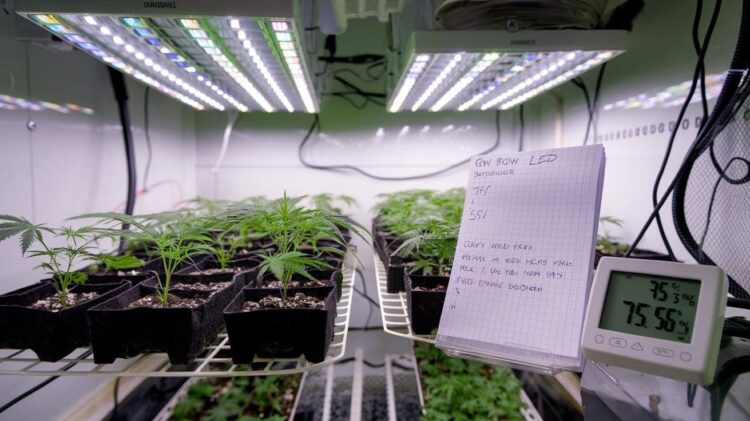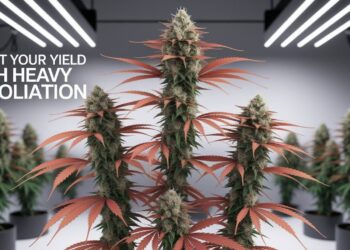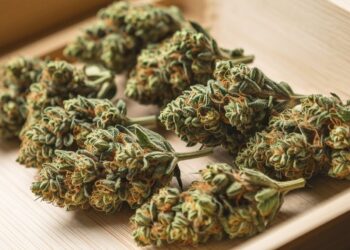Getting your seedlings off to a strong start can feel tricky’ too much humidity makes them weak and leggy, while too little causes them to dry out fast. After growing indoors for over a decade, starting in a basement with secondhand gear, I’ve learned that the secret lies in mastering VPD, Vapor Pressure Deficit.
This guide is based on hands-on experience, not just theory. I’ve adjusted conditions, lost seedlings, and finally found what works through trial and error. You’ll learn the ideal VPD range for seedlings, how to measure it, and how to make simple adjustments using basic tools. No fancy gadgets or science degree needed.
Trust what you’re reading’ this advice comes from real-world experience. I’ve cross-checked data with expert growers and reputable sources. By the end, you’ll know exactly how to give your seedlings the stable, healthy environment they need to grow strong from the start.
Understanding VPD for Seedlings
Vapor Pressure Deficit controls how seedlings absorb water and nutrients, and getting VPD right during early growth prevents stress and promotes healthy development.
The Science Behind Seedling VPD
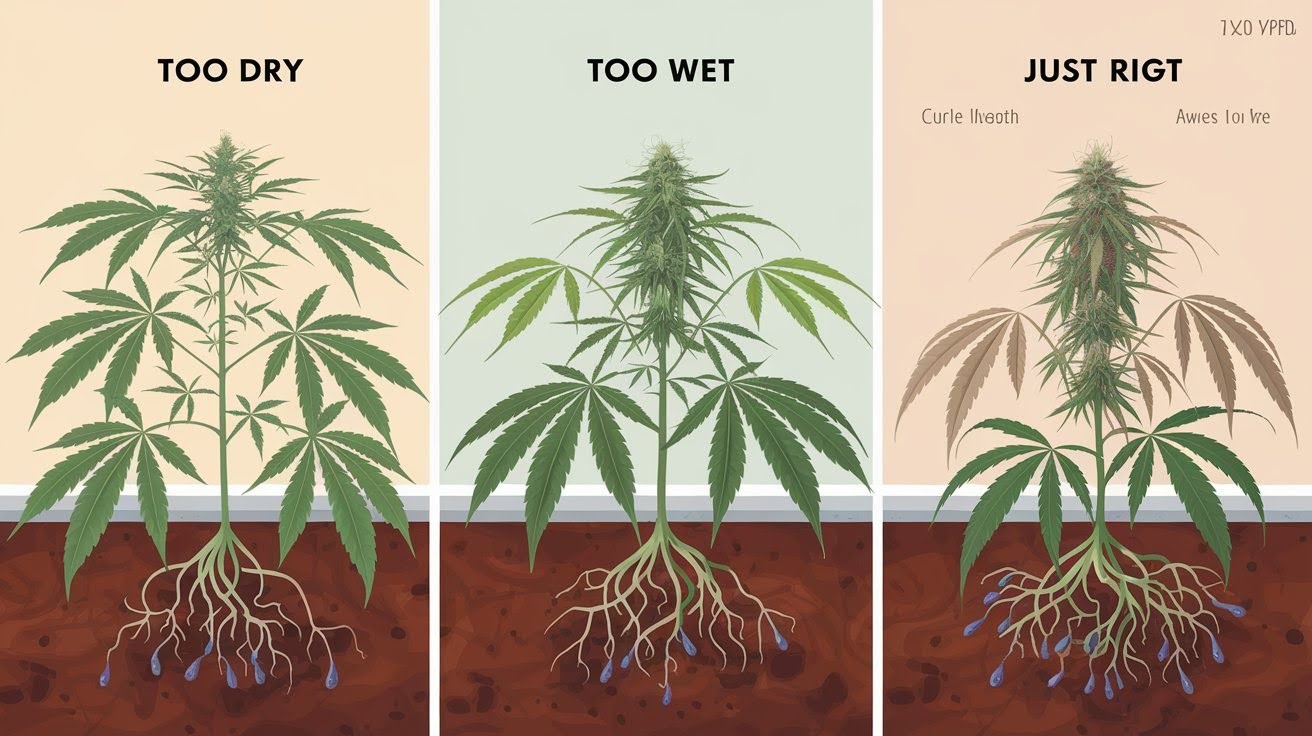
Think of air like a sponge. Warm air holds more water than cool air. Your seedling leaves constantly release moisture into this “sponge.” When the air is already full of water, your plants can’t breathe properly.
VPD measures the humidity of the air around your seedlings. It’s what makes your plants pull water up from their roots. But here’s the thing, seedlings need a gentler pull than big plants. Here’s why:
Your baby plants are operating with training wheels. Their root systems are tiny and can’t handle heavy water demand. Those delicate leaves tear easily under stress. I learned this the hard way when my first seedling batch looked like wilted lettuce.
Transpiration moves nutrients through your seedlings like a tiny elevator system. Too much VPD? The elevator moves too fast and breaks down. Too little? It barely moves at all.
Optimal VPD Range for Cannabis Seedlings
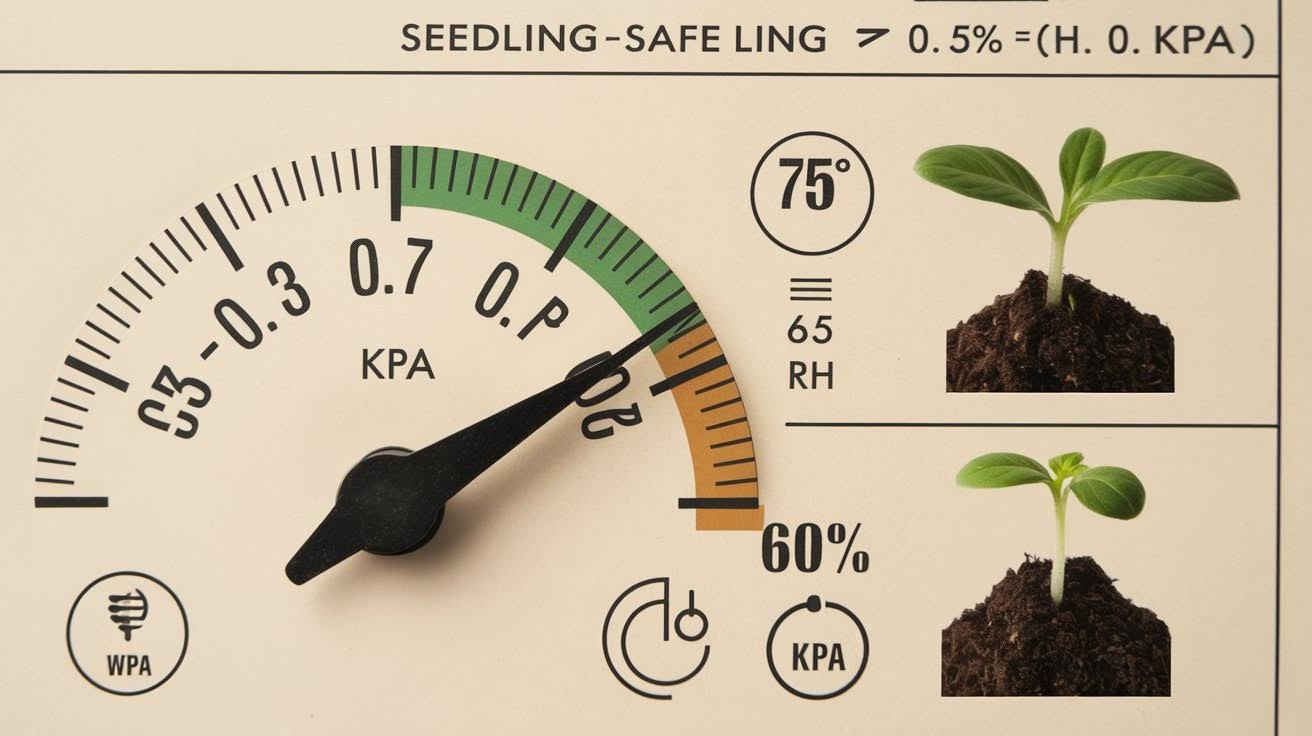
The ideal numbers: 0.5-0.7 kPa. Your sweet spot is 0.5-0.7 kPa. That’s it. Simple. Start at the lower end,0.5 kPa, when your seeds first pop. Those tiny green heads need gentle conditions.
As they grow their first real leaves, you can bump it up to 0.7 kPa. Why so low? Mature plants can handle pressures of 0.8-1.2 kPa just fine. But seedlings? They’d get stressed fast.
Keep your temps between 70-80°F. I stick to 75°F most of the time. Humidity needs to be higher than you think,60-70%. Most growers mess this up by keeping it too dry. Here’s how the math works:
- 75°F + 65% humidity = perfect 0.6 kPa
- 78°F + 60% humidity = also 0.6 kPa
Different combinations, same result. That’s the beauty of understanding this system.
Consequences of Wrong VPD for Seedlings
Incorrect VPD stunts seedling growth, causes nutrient problems, and creates stress that follows plants through their entire life cycle permanently.
High VPD Problems (Too Dry for Seedlings)
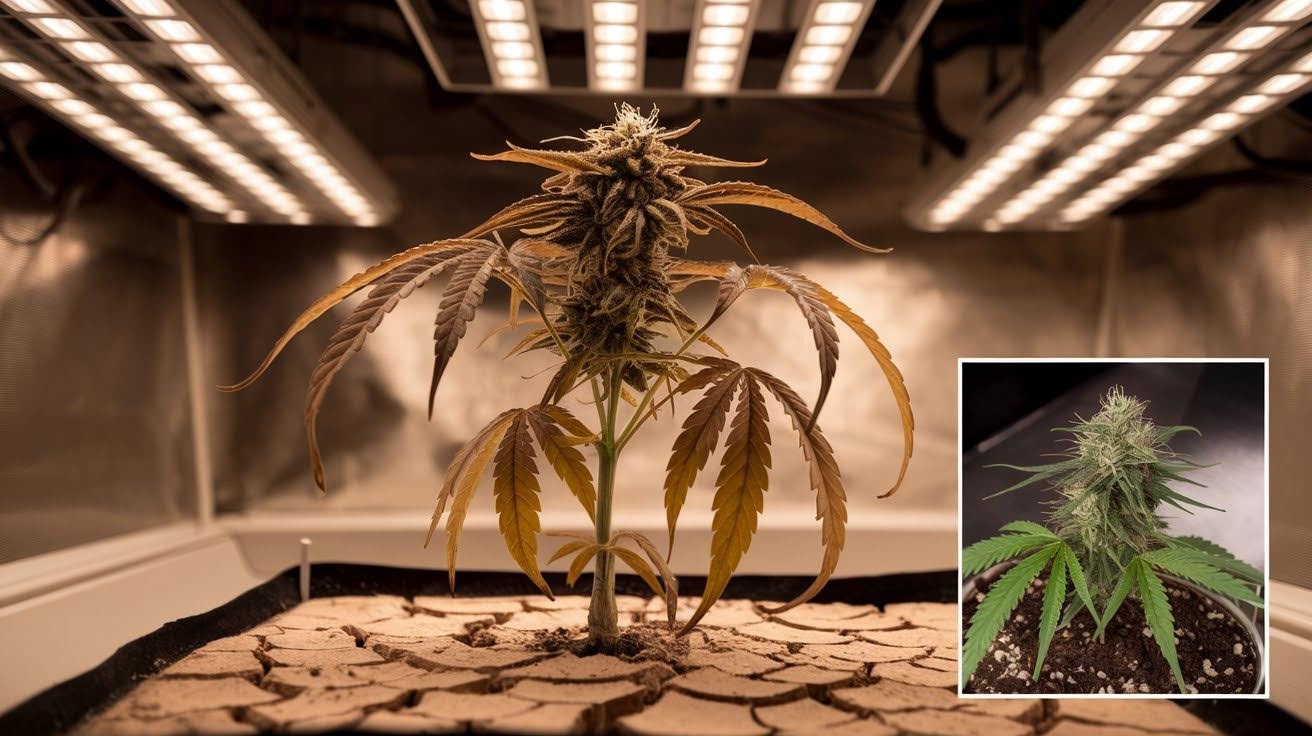
When your VPD exceeds 0.8 kPa, your seedlings begin to lose water too rapidly. Think of it like trying to drink through a fire hose, overwhelming. Their tiny root systems can’t keep up with the demand. The air is so thirsty it pulls moisture right out of those delicate leaves.
I’ve watched perfectly healthy seedlings turn into crispy shells in just a few hours when my dehumidifier malfunctioned. Your plants literally can’t drink fast enough to replace what they’re losing.
You’ll see the damage quickly. Leaf edges turn brown and crispy first’ that’s the classic sign. The newest growth stops expanding and looks stunted. Stems get thin and weak. Sometimes they can’t even hold up their leaves.
However, what tells the story is that your seedlings will lean away from air movement. They’re trying to escape the dry conditions, smart little plants. Growth slows to a crawl. What should take days starts taking weeks.
Low VPD Problems (Too Humid for Seedlings)
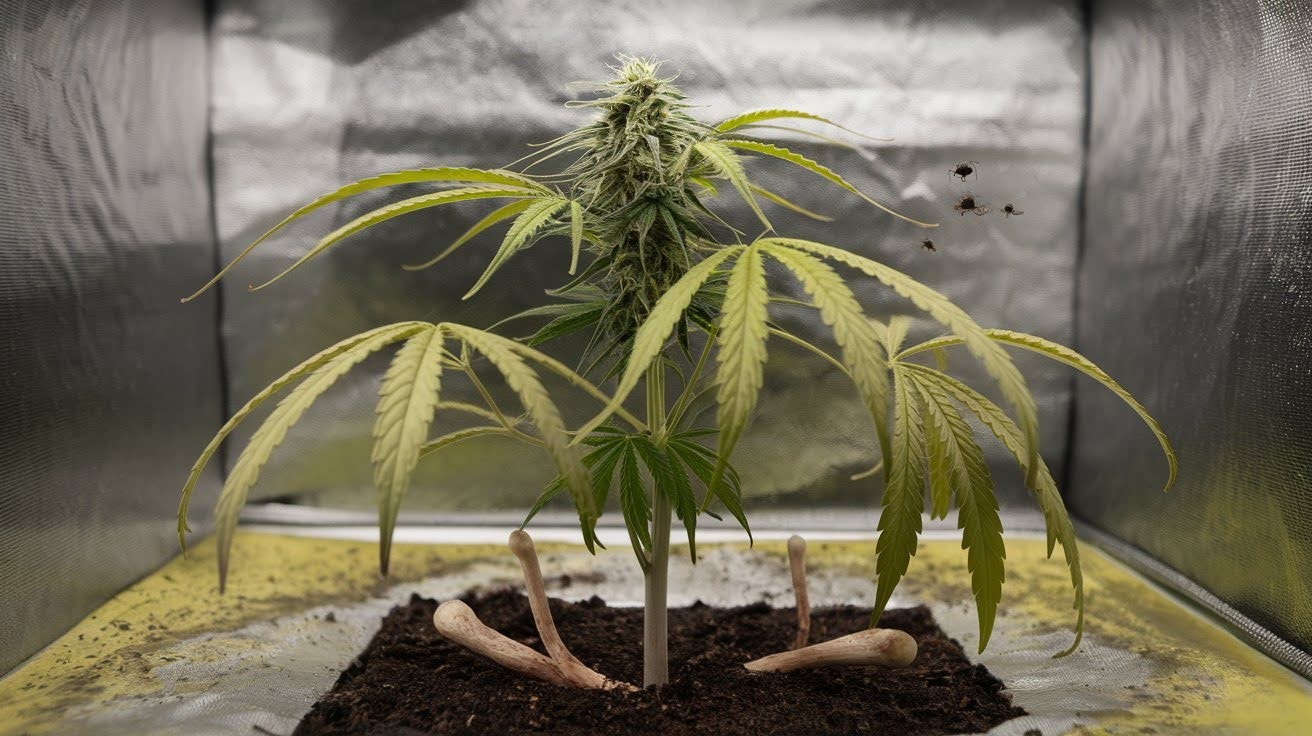
When VPD drops below 0.4 kPa, your seedlings stop breathing. The air is already full of moisture, so there’s no pull for water movement. No water flow means no nutrients moving up. Your plants starve even with perfect soil. Their roots stay weak because they’re not working hard enough to find water.
I learned this when my seedlings got tall and floppy. They looked healthy but felt like wet noodles. Too much humidity creates a perfect storm for problems.
Damping-off hits fast. Your seedling stems turn black and mushy right at the soil level, game over in 24 hours. Fungal infections love those soft, wet conditions. They attack the weakest parts first, usually the stem.
And here’s something I wish someone had told me earlier: stressed seedlings attract pests like magnets. Fungus gnats appear overnight when conditions remain too wet. Maintain balance or face the consequences.
Practical VPD Management for Seedlings
Managing VPD requires balancing temperature and humidity with simple tools’ these practical methods keep seedlings in the optimal growth zone consistently.
Essential Equipment for Seedling VPD Control
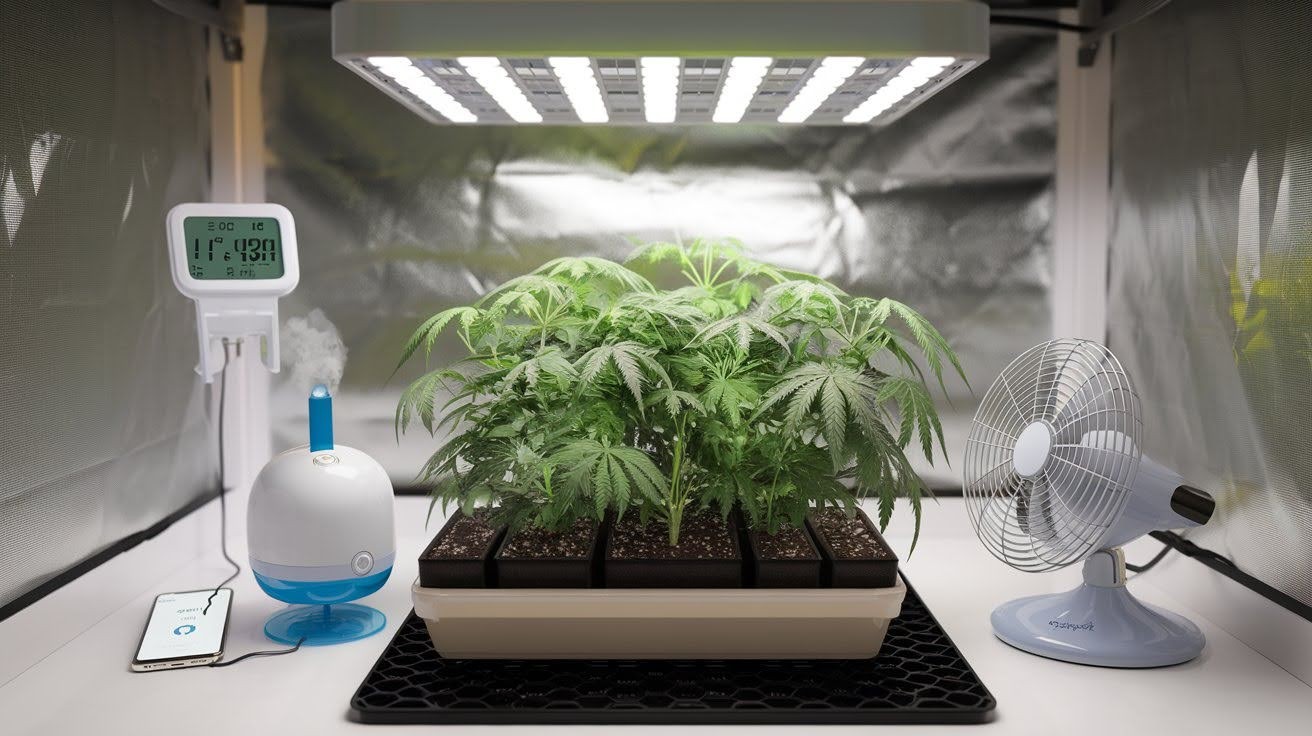
You need a digital hygrometer that shows both temperature and humidity. Get one with a probe so you can measure right at the level of your seedlings, not up on a shelf somewhere.
VPD calculators save time. I use phone apps that do the math instantly. Way easier than charts.
Here’s the key: Place your sensor at canopy height. The conditions 6 inches above your seedlings don’t matter. Small humidifiers work best for seedlings. Those big units create too much moisture too fast.
Gentle air movement is crucial. But no direct fans on baby plants! I use a small fan pointed at the wall to create soft circulation. Heating mats give you precise temperature control without drying the air. Way better than space heaters that mess with your humidity.
Start simple. Add equipment as you learn what your setup needs.
Step-by-Step VPD Optimization for Seedlings
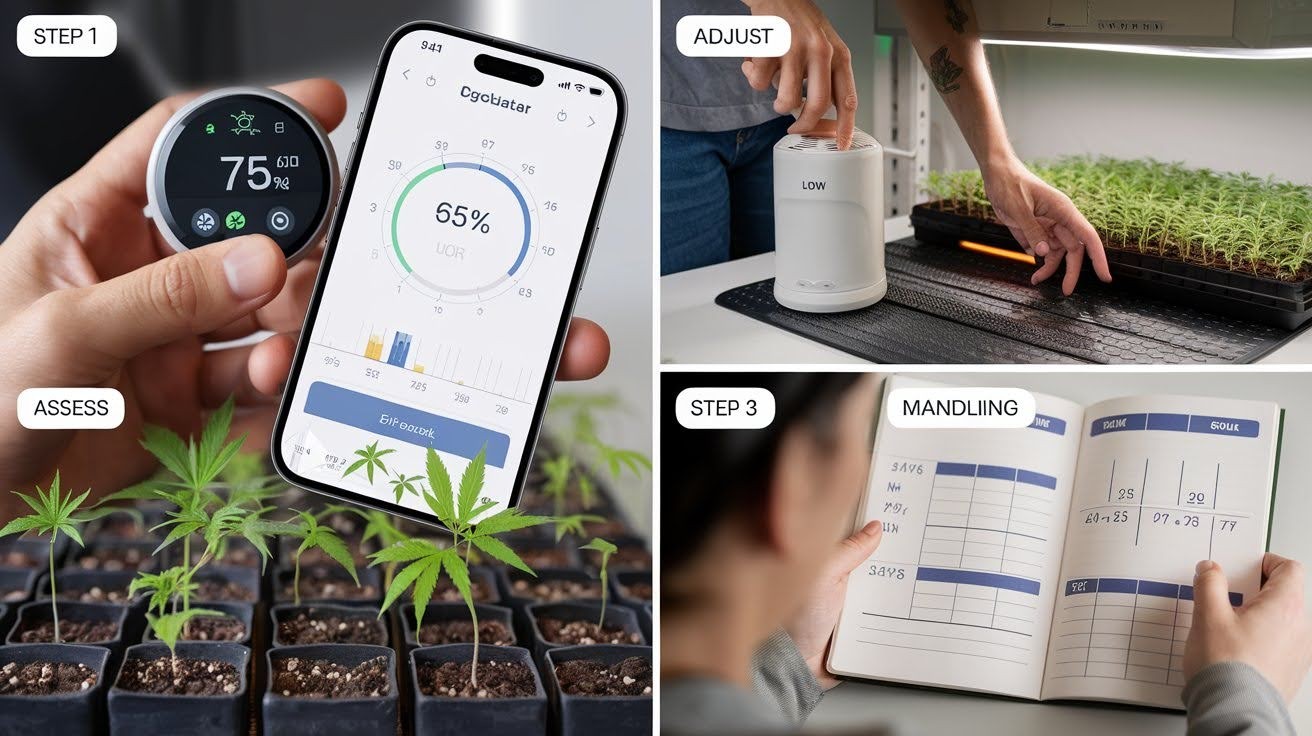
Follow this systematic approach to measure, adjust, and maintain perfect VPD levels. Each step builds toward creating ideal growing conditions for healthy seedlings.
Step 1: Assess current seedling environment
First, get your numbers. Hold that thermometer right at seedling height, not where it’s convenient for you to read. Write down the temperature and humidity every few hours for a full day. You need to see the pattern.
Then do the math. Use a VPD calculator with your readings. Are you hitting that 0.5-0.7 kPa sweet spot? Most growers find they’re running too dry. I was shocked when mine showed 1.2 kPa, way too high for babies.
Step 2: Make gradual adjustments
Never shock your seedlings. Change one thing at a time, making minor adjustments.
If you need more humidity, start the humidifier on its lowest setting. Wait 24 hours. Recheck your numbers.
Temperature adjustments? Move your heat source slightly closer or farther away from the object. Significant changes stress those delicate leaves. I learned this lesson when I cranked my humidifier to maximum and watched my seedlings droop overnight.
Step 3: Maintain consistent conditions
Check your readings twice daily during weeks 1 through 3. Morning and evening work best.
Night temperatures drop naturally. That’s fine, make sure your VPD stays in range. Keep a simple log. When something goes wrong, you’ll know exactly what changed and when.
Troubleshooting Common Seedling VPD Issues

High or low VPD creates specific symptoms in seedlings, identifying these problems quickly and applying targeted solutions prevents permanent growth damage.
Correcting high VPD (too dry)
Add humidity slowly with a small humidifier. Don’t blast them with moisture.
Clear plastic cups work great as mini humidity domes. Just poke a few holes for air flow.
Lower your temperature a couple of degrees if you can do it safely. Even small drops help.
Correcting low VPD (too humid)
Get air moving gently. Point a small fan at the wall, not directly at the seedlings.
Turn down that humidifier gradually. Quick changes shock baby plants. Check your drainage. Soggy soil exacerbates humidity problems and quickly kills roots.
Managing leaf temperature
Your lights might be cooking those delicate leaves. Raise them a few inches. Soft air movement cools leaves without stress. Think of a gentle breeze, not a windstorm.
Here’s the tricky part: Heat stress looks similar to VPD problems. Touch test your leaves, they shouldn’t feel hot.
Seedling VPD Chart and Monitoring
Visual charts and monitoring tools take the guesswork out of VPD management, track conditions accurately to maintain optimal seedling growth environments.
Using VPD Charts for Seedlings
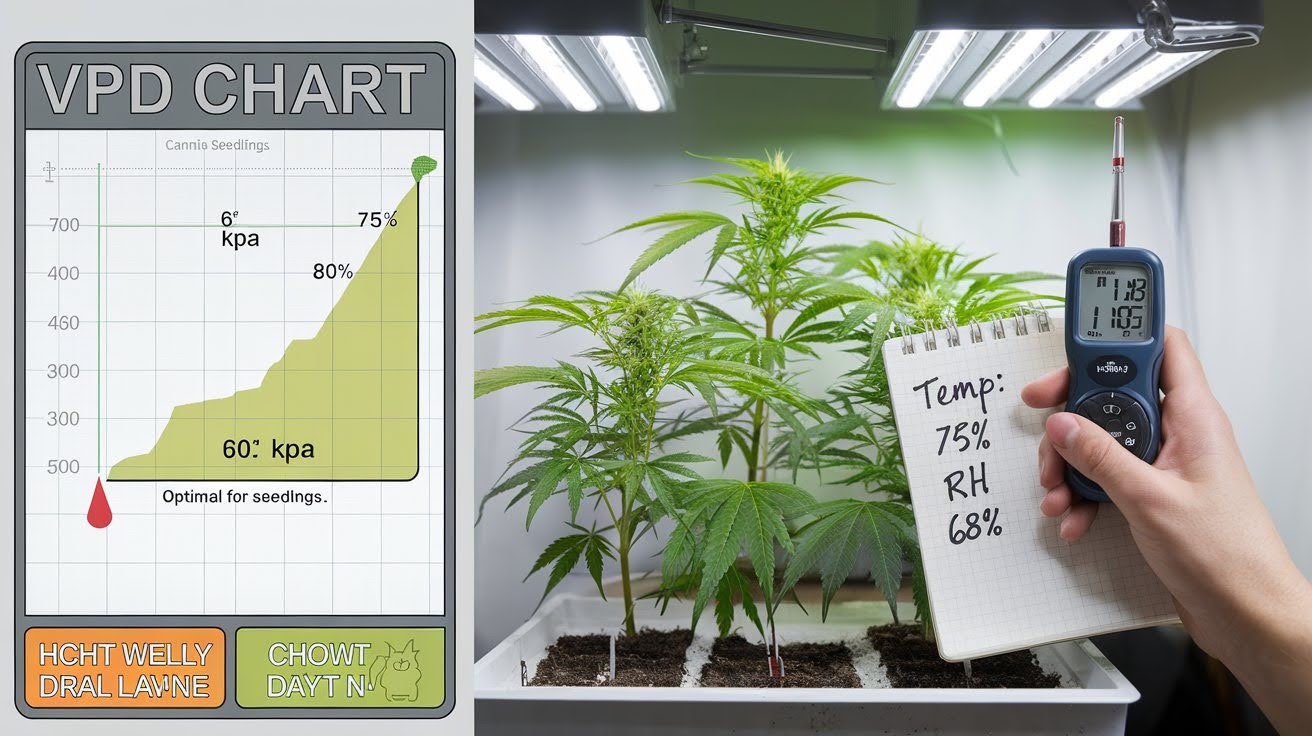
Your chart shows the temperature at the bottom, with a range of 70-80°F. Humidity increases from 60% to 75%. Find where your temp and humidity meet. That dot tells you your VPD number.
Look for the green zone that’s your 0.5-0.7 kPa target. Stay in the green, and your seedlings stay happy. Check twice daily, minimum. I do it when I turn the lights on and off. Please write it down. Your memory isn’t as good as you think it is. A simple notebook works fine.
Use those numbers to adjust your humidifier or fan settings. The chart shows you exactly what to aim for.
Signs Your Seedling VPD is Correct
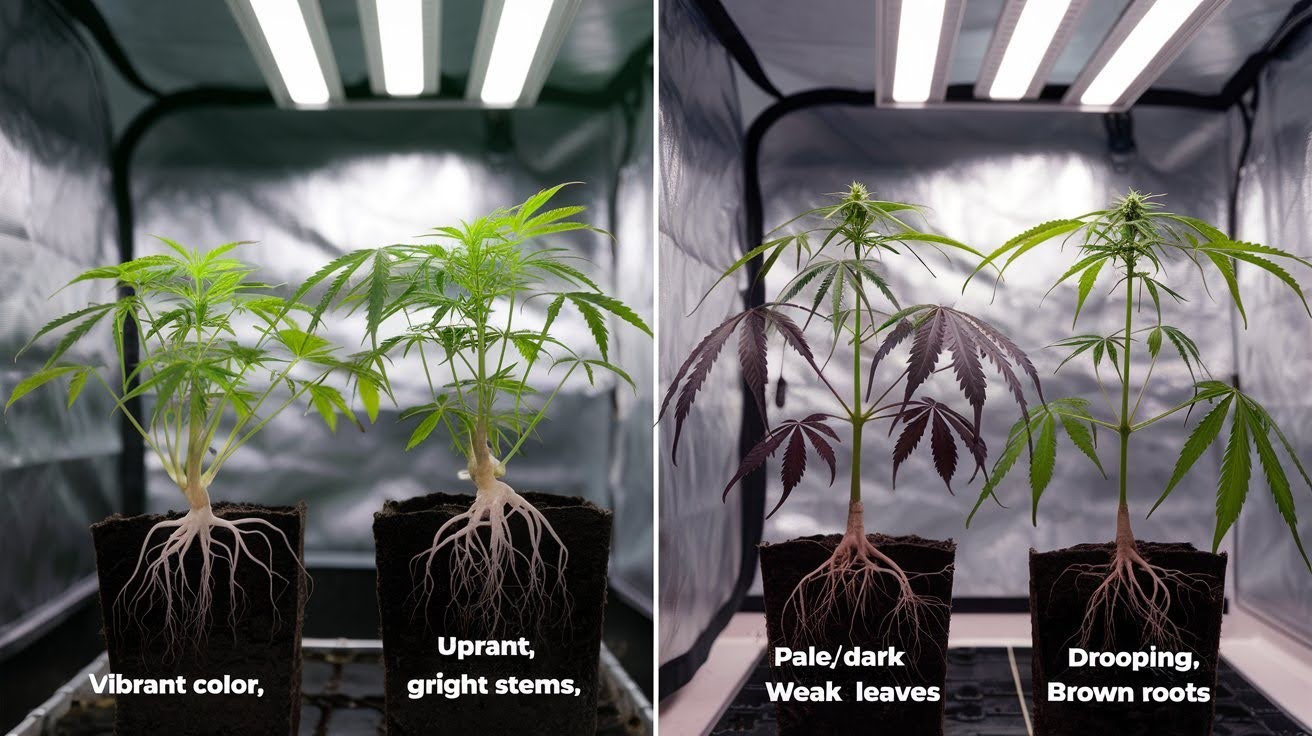
Healthy seedling indicators
Your plants should grow steadily every day. Not explosive growth, just consistent progress.
That green color should be vibrant, not pale or dark. Pale means stress.
Dark green often indicates excessive nitrogen. Stems stand up straight without support. Stretchy, weak stems mean your conditions are off.
Proper transpiration signs
Your soil surface should feel slightly damp but not soggy. Perfect balance. No drooping during light hours. Happy seedlings stay perky all day long.
Check those roots when you transplant. White, spreading roots mean you nailed the VPD. Brown or stunted roots? Time to adjust your numbers.
Conclusion
Getting the right VPD for seedlings doesn’t have to be complicated. Keep it between 0.5 and 0.7 kPa, monitor it twice daily, and make minor adjustments as needed. Your seedlings will thank you with strong stems, healthy green growth, and robust root development. No more guessing why some batches thrive while others struggle.
Start with basic equipment, a good hygrometer, and a simple humidifier you’ll get most of the way there. The key is consistency, not perfection. Now you have the tools to give every seedling batch the best possible start. Your success rate is about to improve dramatically.
Have questions about your specific setup? Drop a comment below, I read every one and love helping fellow growers solve their environmental challenges.
Frequently Asked Questions
What is the ideal VPD for seedlings?
The optimal VPD for seedlings is 0.5 to 0.7 kPa. Start at 0.5 kPa for newly emerged seedlings and gradually increase to 0.7 kPa as they develop their first real leaves. This range is lower than mature plants need.
How do I measure VPD for my seedlings?
Use a digital hygrometer to measure temperature and humidity at the seedling canopy level. Then use a VPD calculator app or chart to convert these readings into your VPD number. Check twice daily for best results.
What temperature and humidity should I maintain for proper seedling VPD?
Maintain temperatures between 70°F and 80°F, and humidity levels between 60% and 70%. For example, 75°F with 65% humidity gives you a perfect 0.6 kPa VPD. Different combinations can achieve the same target range.
What happens if my seedling VPD is too high?
High VPD (above 0.8 kPa) causes excessive water loss, leading to brown leaf edges, stunted growth, and weak stems. Seedlings can’t replace water fast enough, causing stress and slow development.
How can I fix low VPD problems in my seedling area?
Improve gentle air circulation with a small fan, gradually reduce humidity, and ensure proper drainage. A low VPD (below 0.4 kPa) reduces nutrient transport and increases disease risks, such as damping-off.

